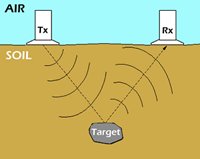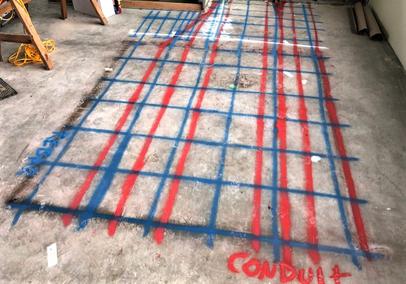The Technology
- Can be used to inspect concrete slabs, walls, beams, columns and ceilings.
- It can accurately locate rebar, post-tension cables, conduits (PVC and metal), voids and measure slab thickness.
- Can locate targets to a depth of 18 inches in concrete and 6 feet in soil.
- Faster, safer and lower cost than radiography (X-ray).
- Requires access to only one side of the concrete.
What is Ground Penetrating Radar (GPR)?
Ground Penetrating Radar (GPR) is a geophysical method that uses radar pulses to image the subsurface. This non-destructive method uses electromagnetic (EM) radiation in the microwave band (UHF/VHF frequencies) of the radio spectrum and detects the reflected signals from subsurface structures.
GPR uses transmitting and receiving antennas. The transmitting antenna radiates short pulses of the high-frequency (usually polarized) radio waves into the ground. When the wave hits an embedded object or a boundary with different dielectric constants, the receiving antenna records variations in the reflected return signal.
The depth range of GPR is limited by the electrical conductivity of the ground and the transmitting frequency. Higher frequencies do not penetrate as far as lower frequencies, but give better resolution. Optimal depth penetration is achieved in cured concrete and dry soil where the depth of penetration is up to 6 feet deep. In wet soils and uncured concrete, high electrical conductivity can minimize penetration to sometimes only a few inches.


